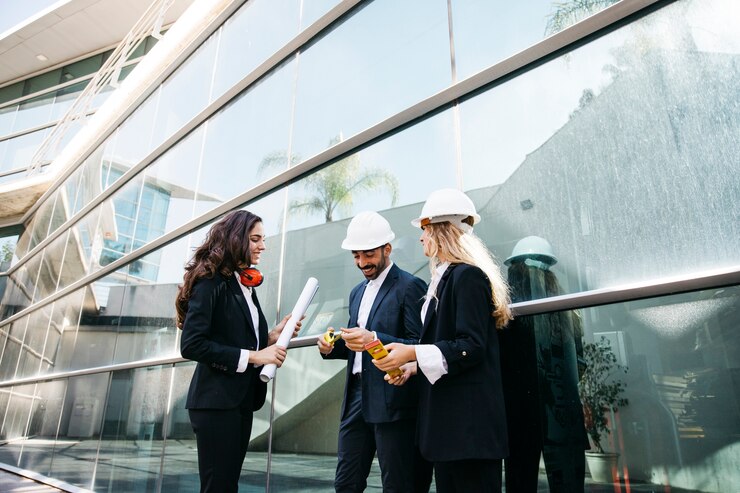Sustainable architecture is not just a trend but a necessity in today’s world, especially in urban centres like Islamabad and Rawalpindi. Architects play a crucial role in shaping the built environment, and their choices can have lasting impacts on the community, economy, and environment. Here are five compelling reasons why sustainable architects in Islamabad-Rawalpindi are vital:
Addressing Urban Challenges
Islamabad and Rawalpindi, like other expanding cities, face urban challenges including rapid population growth, resource depletion, and climate change impacts. One of the key traits of Islamabad architects is their ability to address these issues through sustainable design, focusing on buildings that reduce energy consumption, minimize waste, and incorporate green spaces. By emphasizing eco-friendly principles, these architects play a crucial role in shaping healthier and more resilient urban environments.
Promoting Energy Efficiency
Energy efficiency is a cornerstone of sustainable architecture. In a region like Islamabad-Rawalpindi, where energy demand is high and fluctuates seasonally, sustainable architects design buildings that optimize energy use. This includes incorporating passive solar design, efficient HVAC systems, and renewable energy sources like solar panels. By reducing energy consumption, sustainable buildings lower operational costs for owners and tenants while reducing the city’s overall carbon footprint.
Preserving Natural Resources
Preserving natural resources is a crucial aspect of sustainable architecture, especially in Islamabad-Rawalpindi, where water scarcity is a growing concern. One of the top trends in residential architecture in Islamabad involves implementing strategies like rainwater harvesting and greywater recycling systems. These practices not only lessen the dependence on municipal water supplies but also help maintain the balance of local ecosystems. Sustainable architects also focus on using locally sourced materials and adopting construction methods that minimize waste, further contributing to the conservation of natural resources.
Enhancing Quality of Life
Sustainable architecture goes beyond environmental benefits; it enhances the quality of life for residents and communities. By prioritizing natural daylighting, indoor air quality, and thermal comfort, architects create buildings that promote health and well-being. In Islamabad Rawalpindi’s climate, where summers can be hot and winters cold, sustainable buildings with proper insulation and shading systems provide comfortable living and working environments year-round. Moreover, green spaces integrated into urban designs contribute to mental health and community cohesion.
Leading by Example
Architects in Islamabad-Rawalpindi have the opportunity to lead by example and inspire positive change in the construction industry. By demonstrating the feasibility and benefits of sustainable design practices, they influence developers, policymakers, and the general public to embrace more environmentally responsible building practices. This leadership role is crucial in fostering a culture of sustainability and resilience in urban development.
Conclusion
In conclusion, sustainable architects in Islamabad-Rawalpindi play a vital role in shaping a sustainable future for the region. Through innovative design solutions, they address urban challenges, promote energy efficiency, preserve natural resources, enhance quality of life, and lead by example in the construction industry. As the demand for sustainable buildings grows, their expertise and commitment to environmentally responsible design will continue to be instrumental in creating healthier, more resilient cities.
- Phone: +92 3015161981
- Email: info@oddisodd.com
FAQS
What is the role of architect in sustainable development?
Architects play a crucial role in sustainable development by designing buildings that minimize environmental impact, conserve resources, and enhance community well-being.
What are the goals of sustainable architecture?
The goals include reducing energy consumption, minimizing waste, using environmentally friendly materials, and creating buildings that promote health and comfort while harmonizing with their surroundings.
Why are architects trying to create sustainable buildings?
Architects prioritize sustainable buildings to mitigate environmental impact, lower operational costs, comply with regulations, and meet growing societal expectations for eco-friendly design.
Who introduced sustainable architecture?
Sustainable architecture emerged in the late 20th century as a response to environmental concerns and the need for more efficient building practices.
What is a sustainable design architect?
A sustainable design architect specializes in creating buildings that minimize environmental impact through energy-efficient design, use of renewable resources, and eco-friendly construction techniques.




Comments are closed